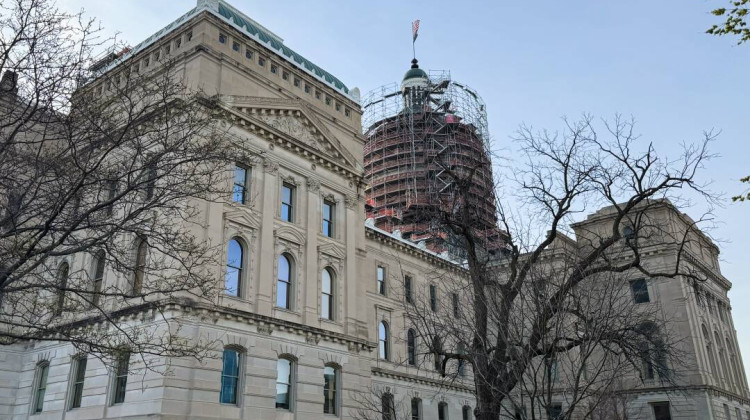
Lauren Chapman / IPB News
An electric bill from Indianapolis Power & Light, now known as AES Indiana. The utility wants to raise the average residential customer's rates by about $24 a month from September to November 2022.Hoosiers have been paying more at the pump for weeks and now many could see higher energy bills too.
Several Indiana electric and gas utilities have asked the state’s permission to make big, temporary rate increases to adjust for the higher cost of fuel due to market disruptions from the war in Ukraine and the pandemic.
“What we're seeing right now, here at Duke Energy, are the highest sustained prices for fuel that we have witnessed in a decade," said Angeline Protogere, spokesperson for Duke Energy Indiana. "Global demand and tight fuel supplies, as well as labor shortages at coal mines and railroads are affecting the cost of the power we produce, as well as what we purchase in the energy markets."
Fuel cost adjustments are a regular part of your energy bill. Those adjustments happen every three months and can go up or down depending on fuel costs. Usually it's only the difference of a few dollars on your bill — but with fuel costs this high, consumer advocates are taking notice.
Both Duke Energy and AES want to raise rates by more than $20 a month for the average residential customer who uses around 1,000 kilowatt hours a month. NIPSCO by $13. Some gas utilities want to raise rates by anywhere from nearly 40 percent to more than 80 percent.
The consumer advocacy group the Citizens Action Coalition said if Indiana electric utilities made a bigger effort to transition to renewable energy sources, they wouldn’t need to deal with these changing fuel prices.
While wind and solar have also faced supply issues due to COVID-19, Citizens Action Coalition executive director Kerwin Olson said they don’t have to rely on fuel.
“We go back and forth between coal and gas and coal and gas. When the reality is we should be moving to much more sustainable models that are not are subjected to these types of supply disruptions and volatility," he said.
Olson said the state should consider making utilities absorb the risks of their fuel decisions — not customers.
Protogere said the company doesn't make a profit on fuel costs.
"Customers pay what we pay,” she said.
But Olson said utilities are making a profit on the infrastructure that requires that fuel — things like coal and natural gas plants and gas pipelines.
READ MORE: Extreme heat puts Indiana, other states at risk for an ‘energy emergency’ this summer
Join the conversation and sign up for the Indiana Two-Way. Text "Indiana" to 73224. Your comments and questions in response to our weekly text help us find the answers you need on statewide issues, including this series on climate change and solutions.
Protogere said, at least at Duke Energy, the utility hopes to recover those fuel costs over six months to reduce the burden on its customers — instead of the usual three months.
The company has also started offering six-month payment plans. And Protogere encourages any Duke customers to reach out to the utility if they have trouble paying their bills. She also said customers can sign up for high bill alerts and follow these energy efficiency tips to reduce their bills.
Olson said state laws that make it easier for Hoosiers to generate their own energy through solar panels and make their homes more energy efficient would also help to reduce energy bills.
He said this situation also emphasizes the need for a more robust statewide energy assistance program to help Hoosier's vulnerable to energy shutoffs like lower-income residents as well as seniors and disabled Hoosiers who may be on fixed incomes.
If approved by the Indiana Utility Regulatory Commission, these rate increases would be temporary. But as the war and the pandemic don’t show signs of stopping any time soon — it’s unlikely higher energy bills will either.
In a statement, AES Indiana said natural gas prices are projected to be 288 percent higher for September through November compared to the same period forecast last year. The utility said outages at the Eagle Valley natural gas plant were not factored into the company's proposed increase.
To comment on fuel adjustment rates for your energy utility, submit them through the Indiana Office of Utility Consumer Counselor.
This story has been updated.
Contact reporter Rebecca at rthiele@iu.edu or follow her on Twitter at @beckythiele.
Indiana Environmental reporting is supported by the Environmental Resilience Institute, an Indiana University Grand Challenge project developing Indiana-specific projections and informed responses to problems of environmental change.
 DONATE
DONATE






 Support WFYI. We can't do it without you.
Support WFYI. We can't do it without you.